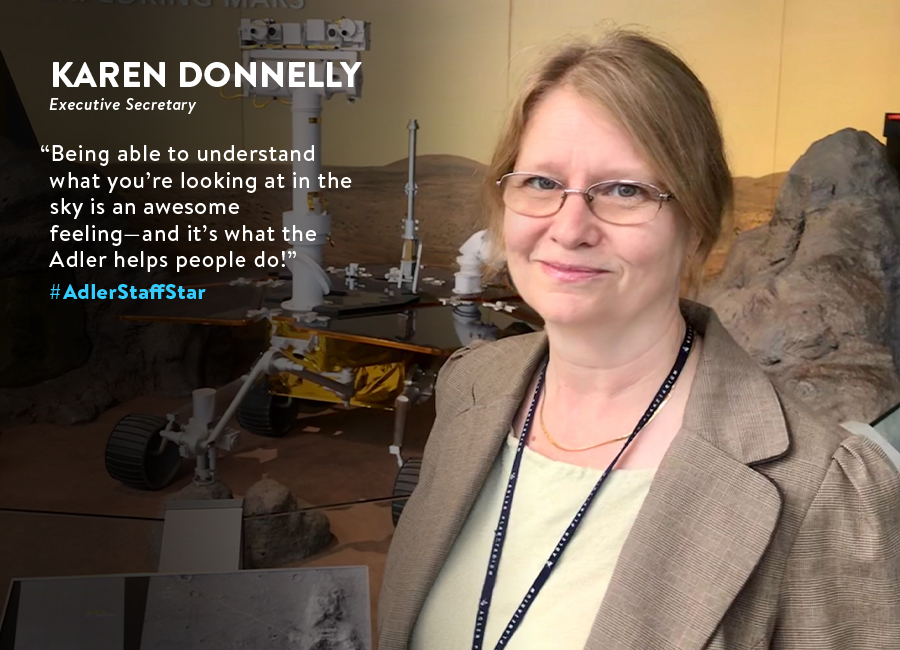Adler Skywatch: July 2023
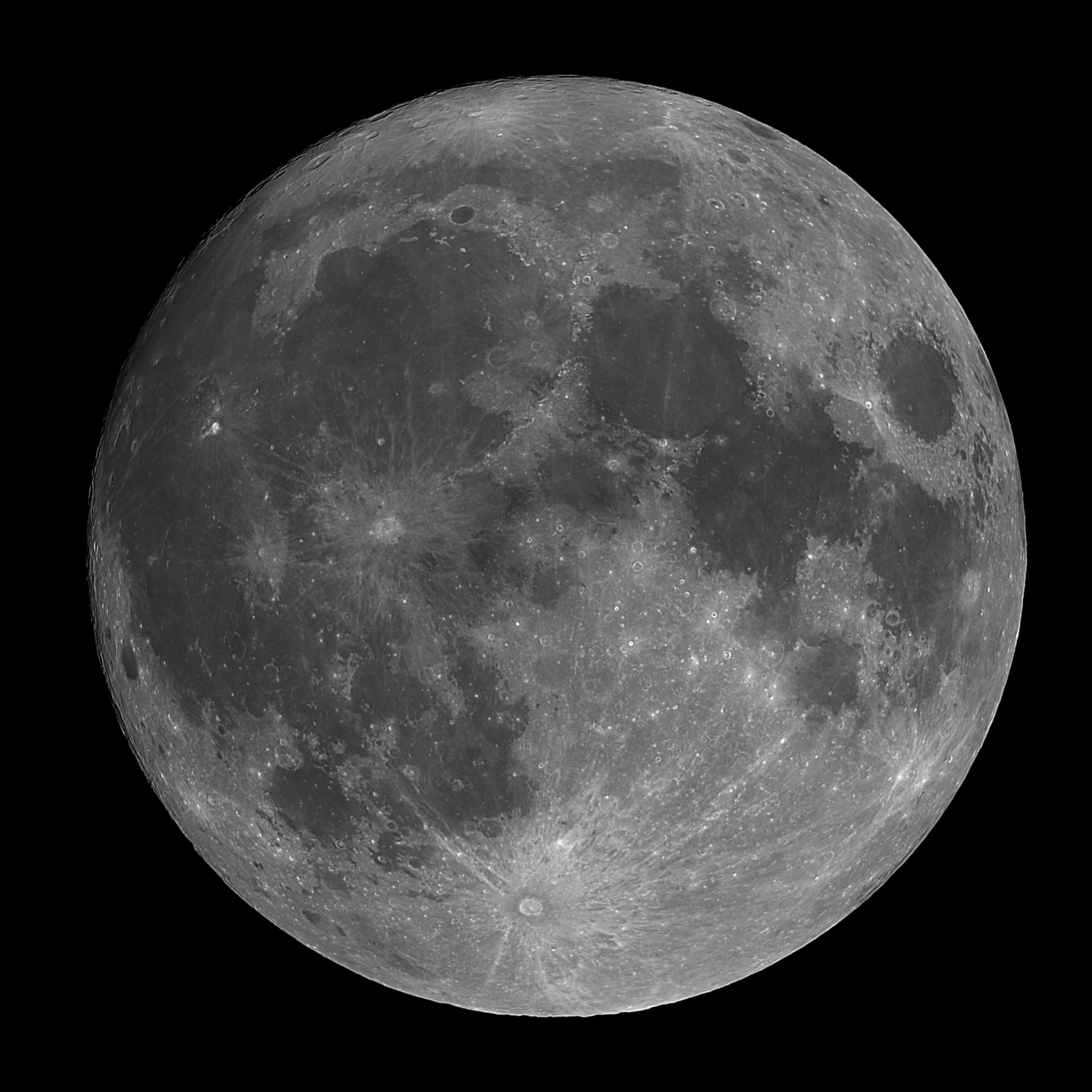
Header image: The full Moon, captured by the Adler Planetarium’s Theaters Manager, Nick Lake.
With clear skies, good sight lines, and careful timing, you have the opportunity to see all five planets visible to the naked eye this month and a supermoon. Here’s your guide to stargazing this month, July 2023!
Planets After Sunset
The brightest planet, Venus, can be seen low in the western sky shortly after sunset. It starts the month about 20 degrees above the horizon before setting in the west-northwest around 10:30 pm. As each evening passes, the planet sets earlier and appears lower in the sky. By the end of the month, Venus will set only about 20 minutes after the Sun. Venus will soon get lost in the Sun’s glare and won’t return until mid-August, when it will rise in the east just before sunrise.
The next planet isn’t quite as easy to spot as our neighbor, Venus. While Mars can get very bright sometimes, this month it’ll appear much dimmer—at only about 1.75 magnitude. Mars appears above and to the left of Venus. The distance in the sky between the two planets grows larger as the month passes. Mars sets closer to the west than Venus does this month, around 10:30 pm at the start of the month and around 9:30 pm by month’s end.
Venus and Mars will appear close to stars in the constellation Leo the Lion. The brightest star in Leo, Regulus, is slightly brighter than Mars this month. Algieba, the third-brightest star in Leo, appears slightly dimmer than Mars. The evenings of July 9–10, Regulus appears less than a degree away from Mars.
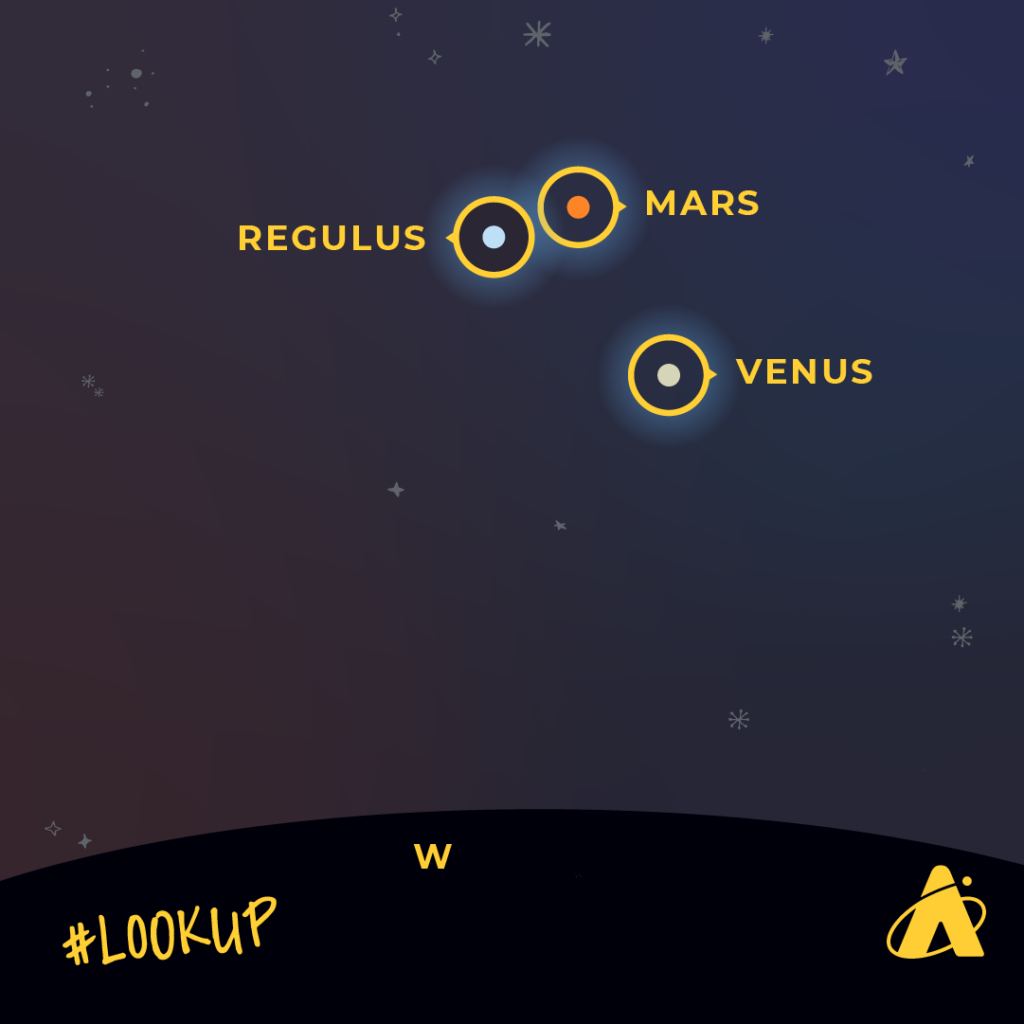
July 20 is the 54th anniversary of humankind’s first Moon landing, and we’ll have a special stargazing treat to celebrate! A very slim waxing crescent Moon will be joining Mars, Venus, Algieba, and Regulus low in the western sky. Mars will be to its left, Algieba slightly upwards and to its right, Regulus just below it, and brilliant Venus just below Regulus.
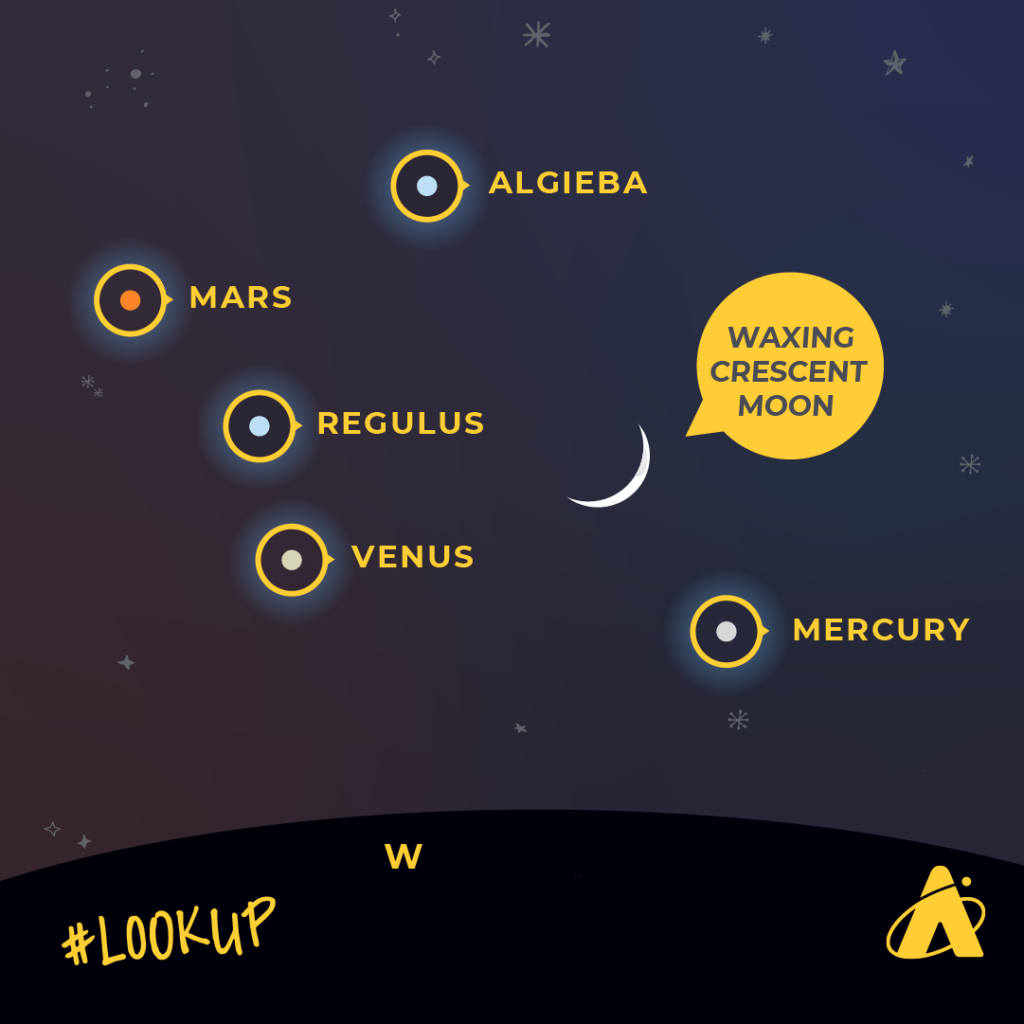
If you have a very clear view to the west-northwest horizon, look about ten degrees to the right of Venus and try to spot Mercury, which is very low but brighter than anything else in that part of the sky except Venus. Mercury moves slightly more southward each night late in the month. The evening of July 28, it appears less than a tenth of a degree away from Regulus. Mercury is the brighter of the two. Look for Mercury while you can, because by July 26 it will begin to sink lower in the sky each evening, becoming very difficult to see.
Saturn At Night
The planet Saturn rises in the east-southeast around midnight on July 1. By month’s end, it rises before 10:00 pm. It gets slightly brighter each night, gaining about two-tenths of a degree of magnitude between July 1–31. When Saturn reaches due-south in the sky, look about 20 degrees below it to spot the star Fomalhaut, a bright star in an area of the sky that doesn’t have many bright stars. Saturn is the brighter of the two. The planet fades away in the southwest skies during morning twilight.
Early Mornings With Jupiter
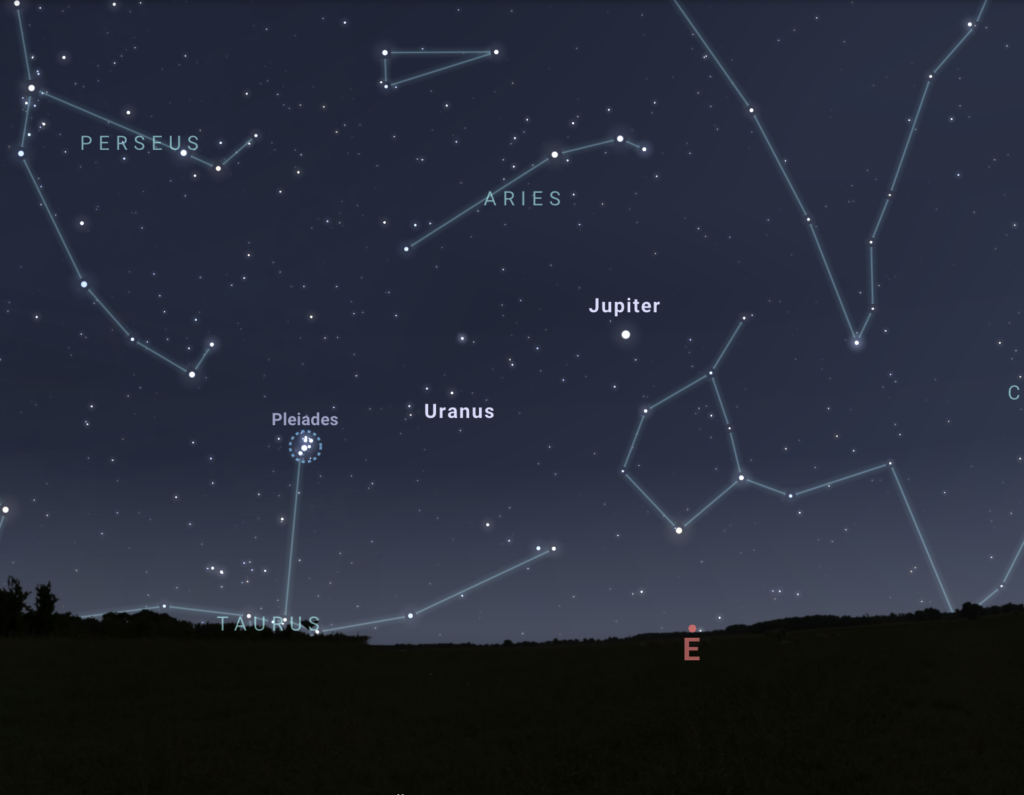
The planet Jupiter rises in the east-northeast around 2:00 am at the start of the month and just after midnight by the end of the month. It’s very bright and easy to spot. Look about 20 degrees to the left of Jupiter to see the twinkly Pleiades star cluster. Jupiter will be high in the east-southeast sky by the time the rising Sun blots it from view.
Moon Phases

The Full Buck Supermoon rises this month on July 3. A supermoon occurs when the full Moon and the perigee occur at the same time. The perigee is when the Moon is closest in its orbit to the Earth. Look up after sunset on July 3 to see the Moon look slightly brighter and larger than a regular full Moon.
Full Moon: July 3
Last Quarter Moon: July 9
New Moon: July 17
First Quarter Moon: July 25
Please note: these descriptions are for the Chicago area, using Central time.
Subscribe To Skywatch Wednesday This July
Tour the night sky with the Adler Planetarium’s Theaters Manager, Nick, in Skywatch Wednesday. Nick uses cutting edge visualizations, NASA images, and astrophotography to show you what you can see in the night sky throughout the year.
Check out our latest episode for an astronomical tour of the 2023 summer night sky! Learn about the summer triangle, the zodiac constellations, how to see the Milky Way galaxy, and more!
Learn From Our Astronomy Educators
Watch exclusive live episodes of Sky Observers Hangout this July! Learn how to observe upcoming cosmic happenings, enhance your astrophotography skills and see celestial objects through a telescope virtually with our astronomy educators. Check out Michelle and Hunter’s latest episode, Gazing at Galaxies, to learn how to spot galaxies in the spring night sky!





